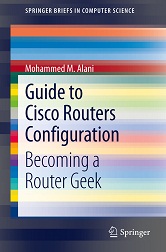When would you need this: When you need to setup dynamic routing for a large network and not all your routers are Cisco routers.
Special Requirements: None.
OSPF is one of the most widely used dynamic routing protocols. Cisco's version of OSPF is compatible with non-Cisco routers. If your network is not too large, Single area OSPF configuration is easier.
An area is a logical grouping of routers running OSPF. All routers in the same area, share the same topology database. Multiple-Area OSPF is used for large networks to prevent their topology databases from becoming out of the capability of the router.
When you design the areas and assign them IP addresses, remember to assign IP addresses that can be summerized. Make sure that all IP addresses in an area can be summerized into a single address with a different subnet mask. This is very important in reducing the amount of routing information exchanged between routers. (This, basically, is the idea behind creating mutiple areas instead of one).
Area 0, or sometimes referred to as Backbone Area, will act as the center of the universe for all the other areas. All areas must be connected to Area 0. On the edge of each area, the router connected to another area is called Area Border Router (ABR). If not all areas can be connected to Area 0, there is a solution called Virtual Links that is discussed here.
Lets move on to the configuration. For the sake of clearness, the ABR router that you plan to put into area 0 will be called "Area 0 ABR". The ABR at the border of other areas will be called "Area x ABR"
Part One: Area 0 ABR
1. OSPF best route calculations relies solely on Bandwidth. Hence, you need to setup the bandwidth of the serial interface involved in the routing process using the following command on the interface:
Router(config-if)#bandwidth XX
where XX is the bandwidth of the connection in kilobytes.
Remeber that this command does not change the actual bandwidth, it only changes the bandwidth being seen by the routing protocol for the purpose of best path calculation.
2. Instruct the router to activate the OSPF routing process:
Router(config)#router ospf YY
where YY is the process number of OSPF. This process number is of local significance. It does not have to be the same on all routers.
[sniplet adsense]
Read the rest of the article in the Router Geek Book: Guide to Cisco Routers Configuration



Al
August 16th, 2012 at 06:04
Dr. Mohammed when fixing a virtual link, can you replace it with a tunnel or what would be the appropriate configuration to fix a virtual link? Would it be appropriate to turn in into a nssa area or run another routing protocol?
Shukran jazeelan
Al